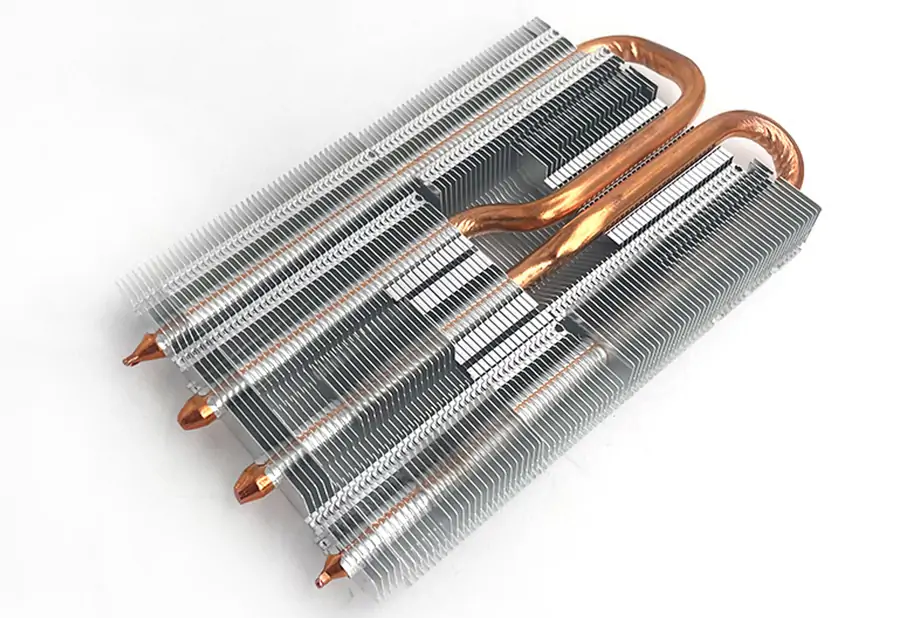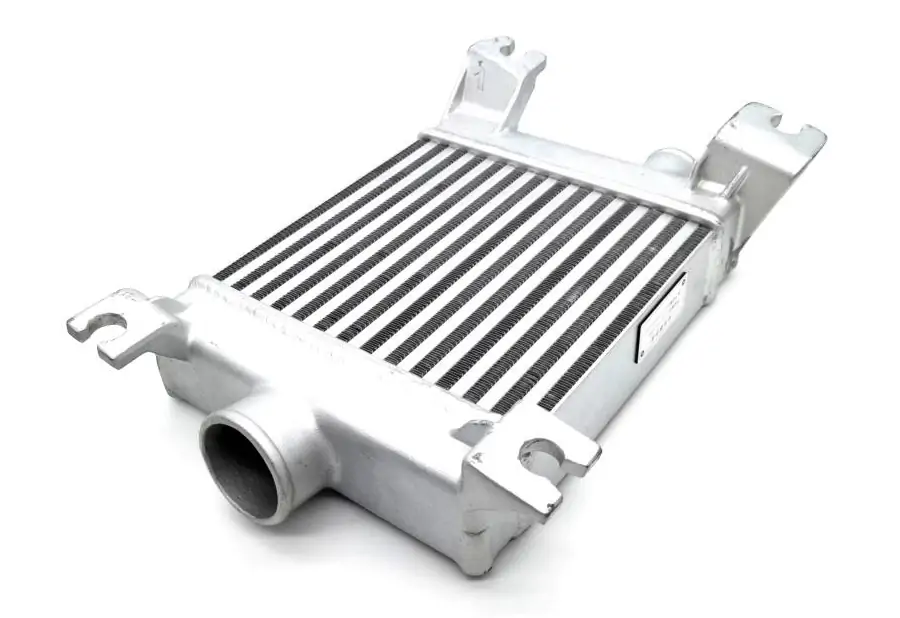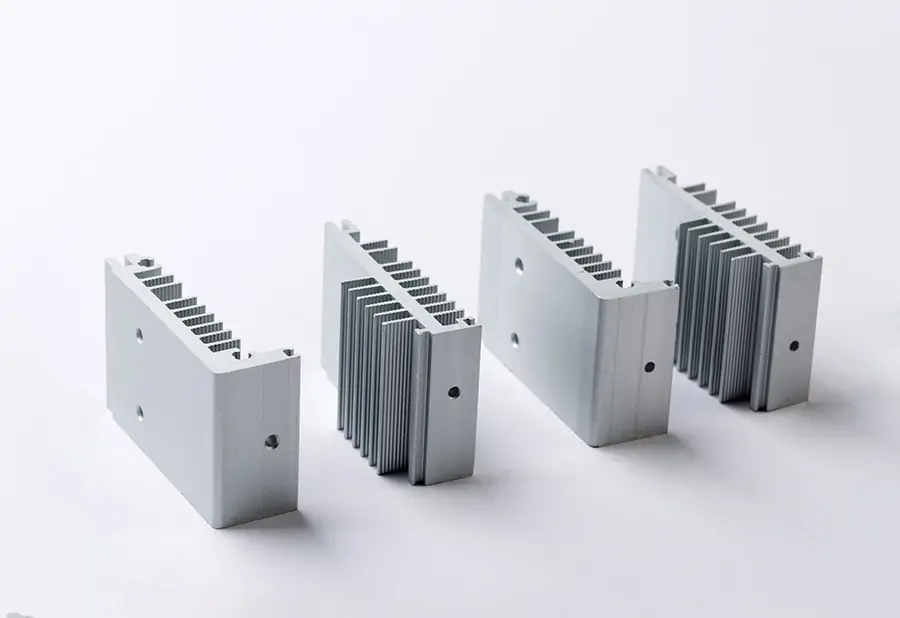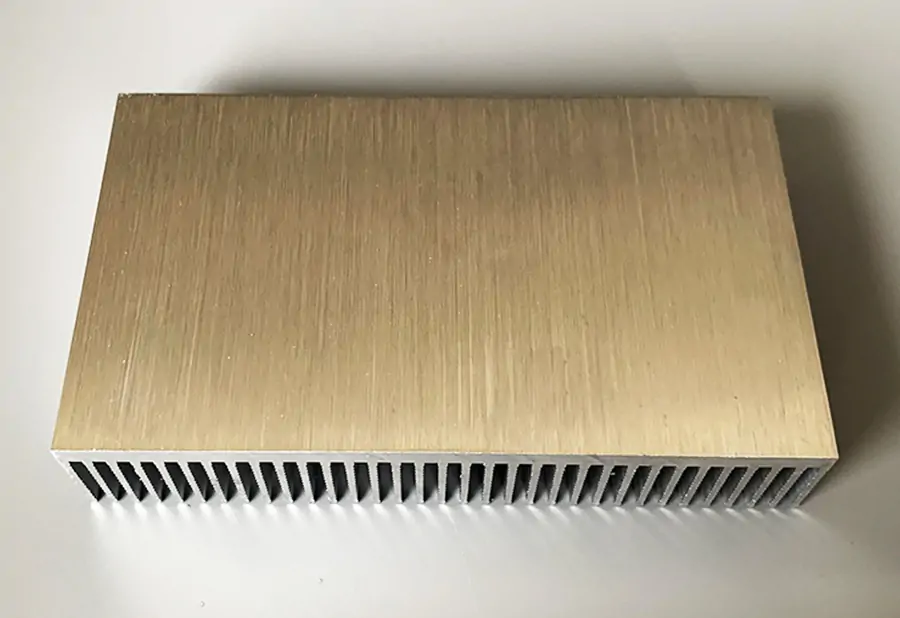Tired of your computer overheating and slowing down? Look no further! In this comprehensive guide, we will unveil the untapped potential of heat dissipation and show you how heatsink cooling solutions can keep your devices running smoothly. From gaming PCs to high-performance servers, understanding the science behind heat transfer is essential for optimal performance and longevity.
In today's brand-obsessed world, it is more important than ever to choose the right cooling solutions that align with your brand's values. With our guide, we'll explore the various types of heatsinks available, their benefits, and their compatibility with different hardware configurations. Whether you are a tech enthusiast, a system builder, or an IT professional, this article will equip you with the knowledge to choose the perfect cooling solution for your needs.
To stay ahead of the game, it is crucial to keep up with the latest advancements in heat dissipation technology.We will delve into cutting-edge innovations, such as liquid cooling and vapor chamber heatsinks, and discuss their advantages and drawbacks. Join us on this journey as we unleash the power of heat dissipation and unlock the full potential of your devices.
Understanding heatsink cooling solutions
Heatsink cooling solutions play a pivotal role in maintaining the optimal temperature of electronic devices. But what exactly are heatsinks and how do they work? Heatsinks are passive thermal management devices that absorb and dissipate heat generated by electronic components. By transferring heat away from the source,heatsinks prevent overheating and ensure the longevity of your devices.
Heatsinks are typically made of materials with high thermal conductivity, such as aluminum or copper. The design of a heatsink plays a crucial role in its effectiveness. It consists of fins or fins with a base that provides a large surface area for heat dissipation. When the device generates heat, the heatsink absorbs the heat and dissipates it into the surrounding environment, allowing the device to operate at a safe temperature.
There are various types of heatsinks available, each with its own advantages and applications. From passive heatsinks that rely on natural convection to active heatsinks that utilize fans for enhanced cooling, the choice depends on factors such as the power consumption of the device, available space, and noise requirements. Let's explore these types of heatsinks in more detail.
Types of heatsinks and their applications
1. Passive Heatsinks:
Passive heatsinks are the simplest form of heatsinks and do not require any additional components, such as fans, to dissipate heat. These heatsinks rely on natural convection to transfer heat away from the device.
Passive heatsinks are commonly used in low-power devices or applications that require silent operation. They are cost-effective, reliable, and easy to install. However, their cooling performance is limited compared to active heatsinks.
2. Active Heatsinks:
Active heatsinks, also known as active cooling solutions, incorporate fans or blowers to enhance heat dissipation. These fans help to increase airflow over the heatsink, facilitating faster heat transfer. Active heatsinks are ideal for high-power devices or applications that require efficient cooling. They provide better thermal performance compared to passive heatsinks but may produce more noise due to the presence of fans.
3. Heatpipe Heatsinks:
Heatpipe heatsinks combine the benefits of passive and active cooling solutions. Heatpipes are sealed copper tubes filled with a working fluid that transfers heat from the source to the heatsink. The heatpipe absorbs the heat, vaporizes the working fluid, and transports it to the cooler end of the heatpipe, where it condenses and releases the heat. This process allows for efficient heat transfer and is particularly useful in applications with limited space or uneven heat distribution.

Factors to consider when choosing a heatsink
Choosing the right heatsink for your device requires careful consideration of several factors. Here are some key aspects to keep in mind:
1. Thermal Design Power (TDP):
The TDP of a device indicates the maximum amount of heat the device can generate under normal operation. It is crucial to select a heatsink with a thermal capacity that exceeds the TDP of your device to ensure effective heat dissipation. Failure to do so may result in overheating and reduced performance.
2. Size and Form Factor:
The size and form factor of the heatsink should be compatible with the dimensions and layout of your device.Ensure that the heatsink fits within the available space and does not obstruct other components or connectors.Additionally, consider the weight of the heatsink to prevent strain on the motherboard or other supporting structures.
3. Airflow and Cooling Efficiency:
The airflow within the device enclosure plays a crucial role in heat dissipation. Evaluate the airflow characteristics and ensure that the chosen heatsink aligns with the system's cooling requirements. Consider factors such as the presence of fans or other cooling components, the orientation of the heatsink, and the overall thermal management strategy.
4. Noise Level:
If noise is a concern in your application, opt for heatsinks with low-noise fans or passive heatsinks that operate silently. Take into account the noise characteristics of the heatsink, including the fan speed, blade design, and noise rating, to maintain a comfortable acoustic environment.
5. Cost and Reliability:
Budget considerations are essential when selecting a heatsink. Evaluate the cost-effectiveness of the heatsink while ensuring its reliability and durability. Cheaper heatsinks may compromise on quality and performance,resulting in inadequate cooling and potential device failures.
Remember to thoroughly research and compare different heatsinks before making a final decision. Ensuring compatibility and considering your specific requirements will lead to optimal cooling performance and device longevity.
The role of thermal interface materials in heat dissipation
Heatsinks alone are not sufficient for effective heat dissipation. The role of thermal interface materials (TIMs) is critical in maximizing the transfer of heat from the device to the heatsink. TIMs are materials applied between the device and the heatsink to fill gaps, improve contact, and enhance thermal conductivity.
The primary function of TIMs is to eliminate air gaps or voids between the device and the heatsink. Air is a poor conductor of heat, and even a small air gap can significantly hinder heat transfer. TIMs, such as thermal pastes or pads, fill these gaps and create a continuous thermal pathway, allowing for efficient heat conduction.
When selecting a TIM, consider its thermal conductivity, viscosity, electrical conductivity, and longevity.
High-quality TIMs with high thermal conductivity values promote better heat transfer. However, be cautious of TIMs with high electrical conductivity, as they may cause short circuits if they come into contact with sensitive electronic components.
Proper application of TIMs is crucial for optimal performance. Follow the manufacturer's guidelines and apply an appropriate amount of TIM to ensure complete coverage between the device and the heatsink. Excessive or insufficient application can lead to overheating or inadequate heat dissipation.
Regular maintenance and replacement of TIMs are recommended to maintain optimal thermal performance. Over time, thermal pastes and pads may dry out or degrade, reducing their effectiveness. Keep an eye on the condition of the TIMs and replace them when necessary to ensure consistent thermal conductivity.
Installation and maintenance tips for heatsinks
Installing and maintaining heatsinks correctly is essential for efficient heat dissipation and overall system performance. Here are some tips to help you get the most out of your heatsink:
1. Clean the Surface:
Before installing a heatsink, ensure that the contact surface of the device and the heatsink is clean and free from dust, debris, or thermal residues. Use a lint-free cloth and isopropyl alcohol to clean the surfaces thoroughly.
2. Apply Thermal Interface Material (TIM):
Apply an appropriate amount of TIM according to the manufacturer's instructions. Use a spatula or a pea-sized dot method to evenly distribute the TIM across the device's surface. Avoid excessive application, as it may lead to spillage or poor contact.
3. Mounting Pressure:
Apply the right amount of mounting pressure when attaching the heatsink to the device. Follow the manufacturer's guidelines to ensure proper contact and heat transfer. Over-tightening may damage the device or heatsink, while inadequate pressure may result in poor thermal conductivity.
4. Secure Mounting:
Ensure that the heatsink is securely mounted to prevent any movement or dislodgement during operation. Loose heatsinks may cause inadequate heat dissipation or even damage other components. Use appropriate mounting mechanisms, such as screws or clips, to secure the heatsink firmly.
5. Monitor Tempe
All of our writers are highly skilled and can create compelling content that is both SEO and conversation optimized. We take pride in our ability to create engaging content that meets our clients' specific needs.
Whether you need blog articles, website copy, social media posts, or any other form of digital content, we have the expertise to deliver exceptional results. Contact us today to discuss your project and see how we can help you unleash the power of effective copywriting and digital marketing.
Common challenges in heatsink cooling and how to overcome them
Heatsink cooling is not without its challenges. One common issue faced by users is improper heat dissipation,resulting in increased temperatures and decreased performance. This can be attributed to factors such as inadequate airflow, improper heatsink installation, or inefficient contact between the heatsink and the heat source. To overcome these challenges, it is important to understand the root causes and implement the appropriate solutions.
Improving airflow is crucial in effective heat dissipation. By optimizing the placement of fans and ensuring a clear path for air circulation, you can significantly reduce temperatures. Additionally, choosing heatsinks with larger surface areas and better fin designs can enhance heat transfer, allowing for more efficient cooling.Remember, the key is to create a balance between airflow and heatsink design to achieve optimal results.
Proper installation of heatsinks is equally important. Many users often neglect this step, leading to subpar performance. It is essential to ensure a tight and secure fit between the heatsink and the heat source, such as a CPU or GPU. Applying an appropriate thermal paste or pad can further improve the contact and enhance heat transfer. Investing time in proper installation will pay off in the long run, as it can prevent overheating and ensure your device operates at its best.
Advanced heatsink cooling solutions for high-performance applications
While traditional heatsinks have proven to be effective in many scenarios, high-performance applications often require more advanced cooling solutions. Liquid cooling, for example, has gained popularity among gamers and overclocking enthusiasts for its superior heat dissipation capabilities. By utilizing a liquid coolant, heat can be efficiently transferred away from the source and dissipated through a radiator, ensuring optimal operating temperatures even under heavy loads.
Another innovative solution is the vapor chamber heatsink. This technology utilizes a sealed chamber filled with a volatile liquid that vaporizes when heated. The vapor spreads across the chamber, transferring heat to the heatsink fins, where it condenses and dissipates. Vapor chamber heatsinks offer improved thermal conductivity and can handle high power densities, making them ideal for demanding applications like data centers and high-end workstations.
It's worth noting that advanced cooling solutions may require additional considerations, such as space requirements and maintenance. Liquid cooling, for instance, requires a dedicated pump and reservoir, as well as periodic coolant replacement. Vapor chamber heatsinks, on the other hand, may have specific orientation requirements to ensure optimal performance. However, the benefits they offer in terms of heat dissipation and performance outweigh the additional considerations for many users.
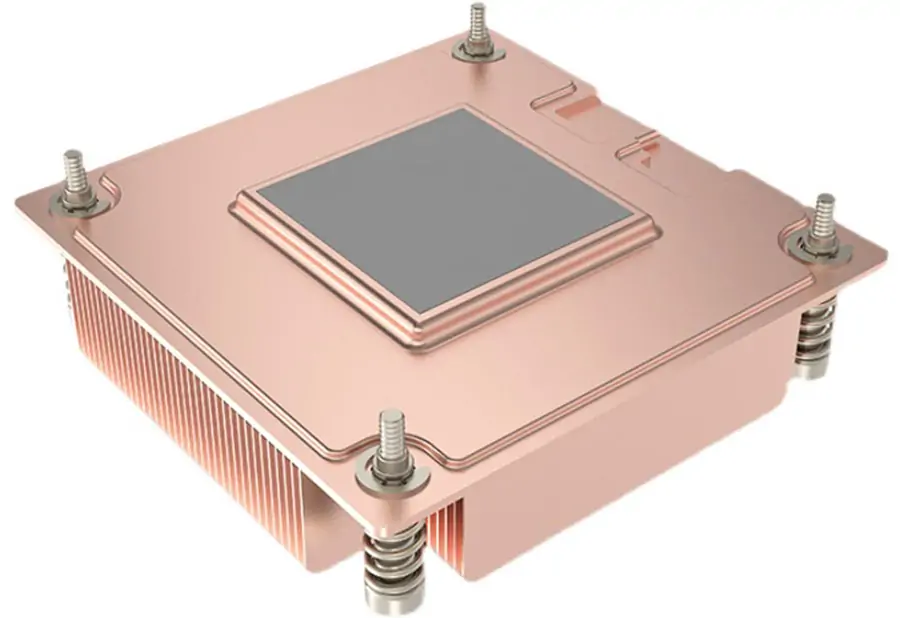
Case studies: Real-world examples of effective heatsink cooling solutions
To further illustrate the effectiveness of heatsink cooling solutions, let's explore a couple of real-world case studies. In the gaming industry, where high-performance and low temperatures are crucial, companies like Corsair have successfully implemented liquid cooling solutions in their gaming PCs. By combining high-quality heatsinks with efficient radiators and fans, they have been able to achieve exceptional cooling performance,allowing gamers to push their systems to the limit without compromising stability.
In the server industry, where heat dissipation is critical for reliable operation, companies like Dell have embraced vapor chamber heatsinks. Dell's PowerEdge servers utilize vapor chamber technology to efficiently cool the processors and maintain optimal performance even in demanding server environments. This ensures that businesses can rely on their servers for uninterrupted operations, minimizing the risk of downtime due to overheating.
These case studies highlight the real-world impact of choosing the right heatsink cooling solutions. By understanding the specific requirements of your application and selecting the appropriate cooling technology,you can achieve enhanced performance, improved stability, and increased longevity for your devices.
Conclusion: Harnessing the power of heatsink cooling for optimal performance
In conclusion, heat dissipation is a critical aspect of maintaining optimal performance and longevity for your electronic devices. By choosing the right heatsink cooling solutions, you can effectively manage heat transfer,ensuring that your devices operate at their best. Whether you opt for traditional heatsinks, liquid cooling, or vapor chamber heatsinks, understanding the benefits and limitations of each solution is key.
Remember to consider factors such as airflow, installation, and compatibility when selecting heatsink cooling solutions. By overcoming common challenges and implementing advanced technologies, you can unleash the full potential of your devices and achieve optimal performance. So don't let heat slow you down! Embrace the power of heatsink cooling and experience the difference it can make in your computing journey.

